These 10 regions have the best real estate prospects for investors
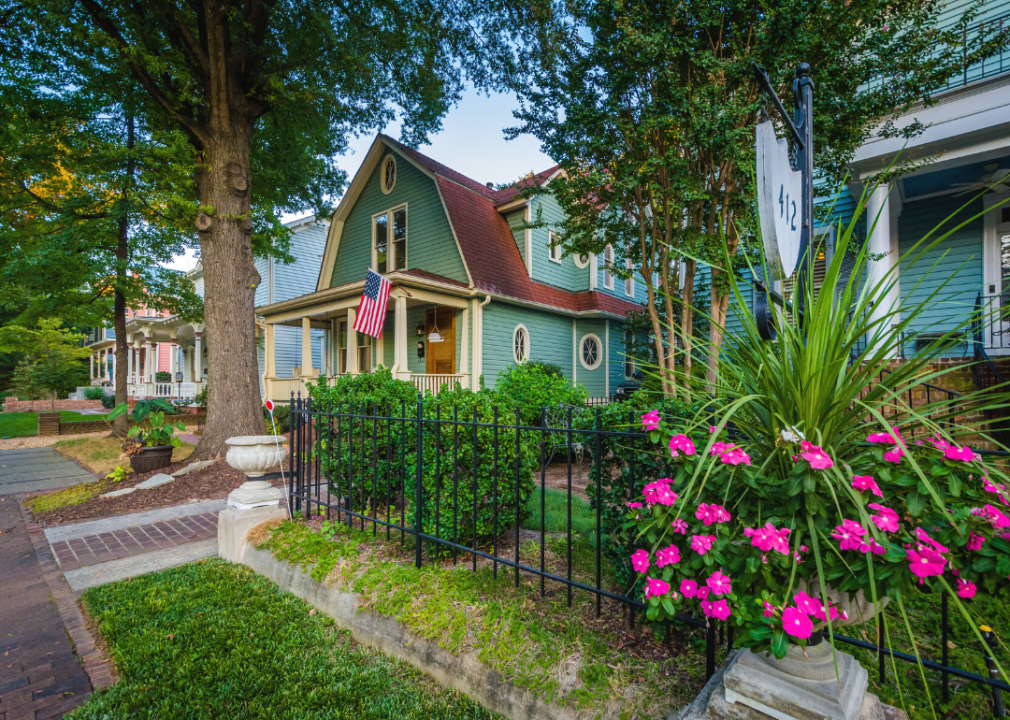
Jon Bilous // Shutterstock
These 10 regions have the best real estate prospects for investors
The national housing market has been hotter than ever over the last couple of years, with markets across the country facing housing shortages and price increases that have made it tough for average buyers to compete. A perfect storm of low mortgage interest rates, a nationwide shift to a remote work culture, and other pandemic-related factors, have only added fuel to the fire in most markets. In other words, it’s tough to find the hidden real estate gems for buyers.
That’s especially true for investors, who have to compete with not only each other for the more desirable properties, but also the slews of new buyers who are now in the market for homes. In addition, there have been widespread foreclosure moratoriums, eviction moratoriums, and a severe shortage of new home construction projects that can’t meet demand in most markets. All these events combined result in a recipe for a lack of housing—and a very unusual housing market for all parties involved.
While it may be more difficult to buy investment properties these days, it’s certainly not impossible. In fact, there are certain markets where the real estate prospects are top-notch—and savvy investors should be keeping an eye on them. Curious as to what these markets are? ZeroDown analyzed data on 10 cities that have the best real estate investing prospects in 2021 and beyond by using data from the Emerging Trends in Real Estate 2021 report, compiled by PwC and the Urban Land Institute. The trends in this report are based on interviews and surveys of over 1,600 individuals who work in either real estate advisory, investing, lending, or real estate development. These individuals ranked 80 markets (exhibit 2-1) based on local economic and housing factors, as well as national trends and the effects of COVID-19.
Some of the statistics used to rank the markets (exhibits 2-14 and 2-15) are listed in this story, and use data from the IHS Markit forecast, U.S. Census Bureau, U.S. Bureau of Economic Analysis, U.S. Bureau of Labor Statistics, Walk Score, National Association of Home Builders (NAHB)/Wells Fargo, and CoStar. The two indexes used in the data are the walk score and the Housing Opportunity Index. The walk score is calculated by analyzing the walkability of different addresses and the nearest amenities. The Housing Opportunity Index analyzes the share of homes sold that were affordable to individuals earning the median household income in that metro.
These 10 markets offer unique factors, from excellent schools to high walkability scores and other regional perks, that will likely attract residents to them for years to come. If you’re looking for your next big move, you may want to pay close attention to these hidden gems. Here’s what investors should know about the 10 U.S. markets with the best real estate prospects.
![]()
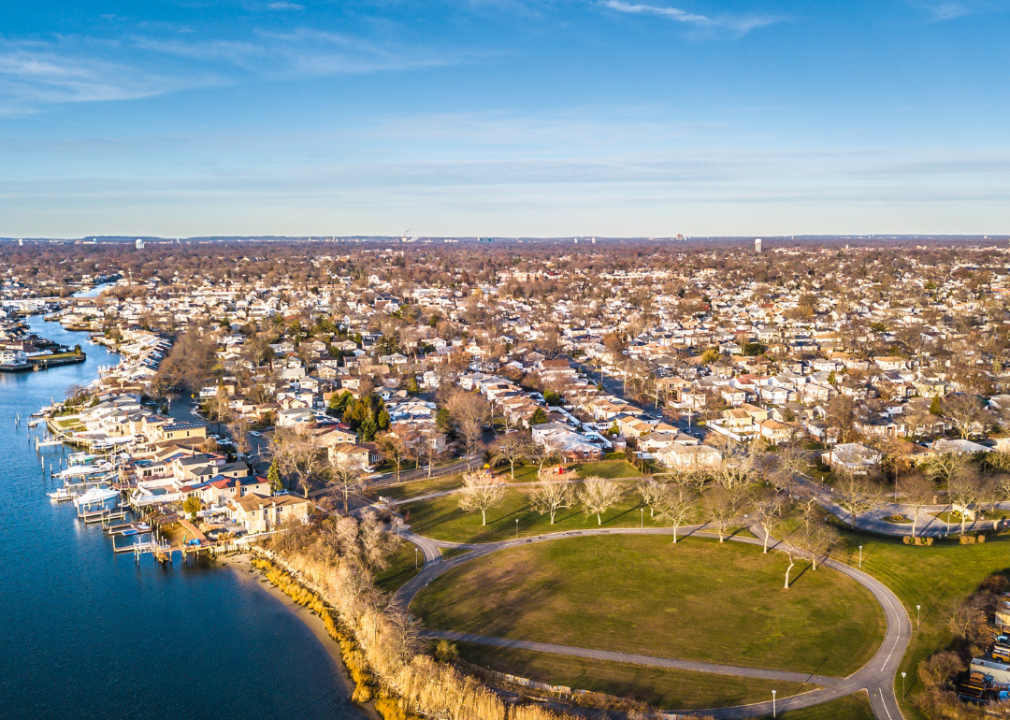
Jayne Lipkovich // Shutterstock
#10. Long Island, New York
– Total households in 2021: 962,500 (five-year projected annual change: 0.3%)
– 2020 median home price: $460,000 (14.1% more than 2019)
– Housing Opportunity Index: 53.5 out of 100
– Walk score: 95 out of 100
– Rent as percent of household income: 23.2%
– 2021 total employment: 1,230,000 (five-year projected annual change: 2.6%)
– Real GDP per capita: $59,812 (five-year projected annual change: 2.1%)
Long Island, New York, has become a hot housing market over the last few years—and there are a few factors making this city one to watch for real estate investors. For starters, Long Island is home to some of the best schools in the state of New York, making it a desirable location for families who want to live in neighborhoods with access to excellent education options. Plus, tons of former New York City residents have flocked to Long Island recently to buy homes with more room than cramped city apartments could offer, which has made this market even hotter at a time when real estate across the nation is at a premium. The city’s relatively close proximity to New York City— which is just a train ride away—makes it a viable option for commuters, and Long Island’s rising but still affordable housing prices also make it an excellent choice for buyers who want to escape the extremely high costs of buying in the city. This island also offers buyers access to homes in neighborhoods of all types and price points, from affordable neighborhoods to the exclusive, costly Hamptons. Add in the city’s excellent walkability scores, access to entertainment and amenities like the boardwalk, and the draw of the seaside atmosphere, and this city is a great one for investors looking to maximize their returns on investment.
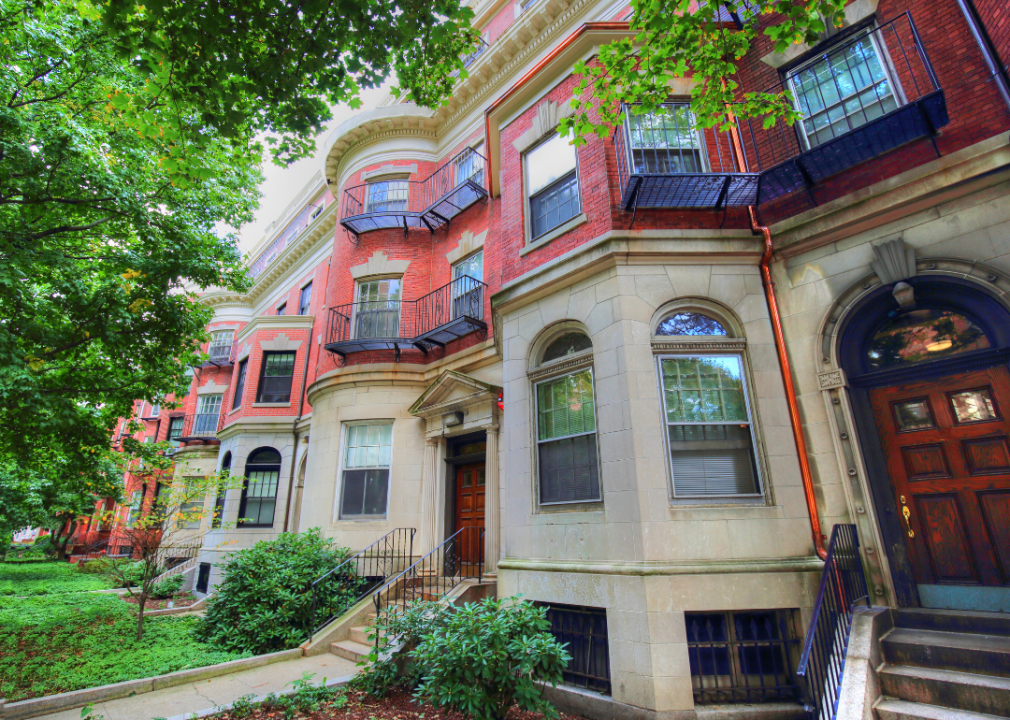
eskystudio // Shutterstock
#9. Boston, Massachusetts
– Total households in 2021: 1,876,800 (five-year projected annual change: 0.6%)
– 2020 median home price: $500,000 (4.2% more than 2019)
– Housing Opportunity Index: 45.5 out of 100
– Walk score: 81 out of 100
– Rent as percent of household income: 25.6%
– 2021 total employment: 2,614,000 (five-year projected annual change: 3.1%)
– Real GDP per capita: $65,677 (five-year projected annual change: 2.2%)
Boston, Massachusetts, is considered to be one of the best places to buy a home right now—which is precisely why investors should be paying close attention to the investment opportunities in this city. While Boston’s housing market is currently as competitive as nearly any market in the nation, there are still some good—and affordable—deals to be found in areas like Hyde Park and Mattapan, both of which offer unique neighborhood amenities and have the potential for home values to increase significantly in the near future. There are also many excellent school districts in Boston, including Dover-Sherborn and Concord-Carlisle, both of which have graduation rates of over 97%—which is a huge draw for parents who want to be zoned to the best schools possible. And, while Boston is currently considered to be the third most walkable city in the nation, it has even bigger plans for the future—with a goal to improve transportation and housing, and become the most walkable city in the country by 2030.
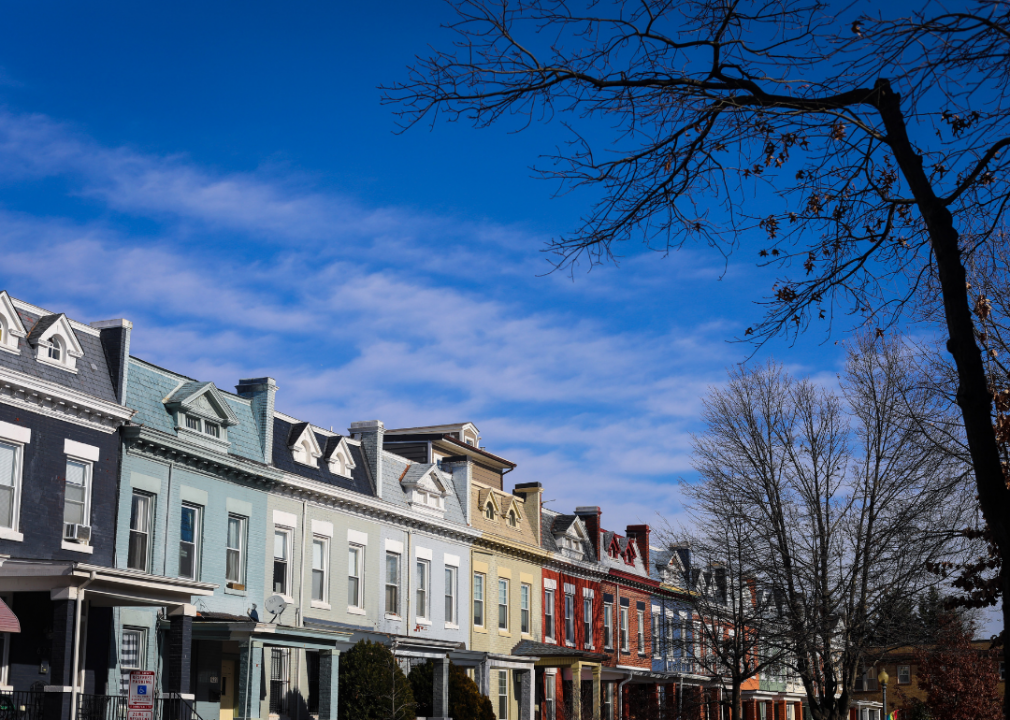
Nicole Glass Photography // Shutterstock
#8. Washington, D.C.–Northern Virginia
– Total households in 2021: 1,121,500 (five-year projected annual change: 1.3%)
– 2020 median home price: $422,000 (7.1% more than 2019)
– Housing Opportunity Index: 67.1 out of 100
– Walk score: 69 out of 100
– Rent as percent of household income: 20.6%
– 2021 total employment: 1,531,000 (five-year projected annual change: 2.5%)
– Real GDP per capita: $62,289 (five-year projected annual change: 1.7%)
Washington, D.C. isn’t just the nation’s capital—it’s also one of the top places for real estate prospects in the nation right now. This city is home to a whopping 131 neighborhoods—all of which are diverse and offer different amenities—and because Washington, D.C. also borders Northern Virginia, there are outlying neighborhoods in Virginia that also offer investment opportunities as part of the D.C. metro area. This allows buyers to choose from homes in a wide variety of price ranges, and while there is currently a shortage of housing in the area, the foreclosure and delinquency rates in the D.C. metro area are below the national average, making it less likely that a housing crisis will occur in the near future. Another allure of this area is that it’s generally pretty walkable, making it easy for residents to bike or walk to work, school, or run errands in the city. There are also plenty of four- and five-star school options in D.C. and Northern Virginia for parents who are looking for high-achieving educational options for their children. While some schools in the metro area lag behind, a push to improve the educational quality at these schools has been successful.

Maciej Bledowski // Shutterstock
#7. Salt Lake City, Utah
– Total households in 2021: 856,600 (five-year projected annual change: 1.2%)
– 2020 median home price: $381,000 (5.1% more than 2019)
– Housing Opportunity Index: 58.0 out of 100
– Walk score: 30 out of 100
– Rent as percent of household income: 13.9%
– 2021 total employment: 759,000 (five-year projected annual change: 2.2%)
– Real GDP per capita: $52,225 (five-year projected annual change: 1.5%)
Salt Lake City, Utah, is another city with big potential for real estate investors—and there are a few factors at play. While real estate is a hot commodity in Salt Lake City right now, the overall affordability of the homes in Salt Lake City, coupled with the wide range of neighborhoods and home prices, makes this city a desirable one for buyers in all price ranges. And, while Salt Lake City isn’t one of the most walkable cities in the nation, it does offer a robust network of public transportation—including an extensive bus system, a light rail system, and a commuter rail—which make it easy to get around the city when you need to. There’s also the draw of a number of eclectic neighborhoods in and around Salt Lake City, including a number of up-and-coming areas like Capitol Hill, Central City, Sugar House, and The Avenues, all of which offer quirky atmospheres and amenities to residents. Those factors—coupled with excellent educational options, including tuition-free charter schools, and the close proximity to a wide range of outdoor recreation options like skiing, hiking, fishing, and river adventures—make Salt Lake a desirable city for home buyers, and one for investors to keep an eye on.
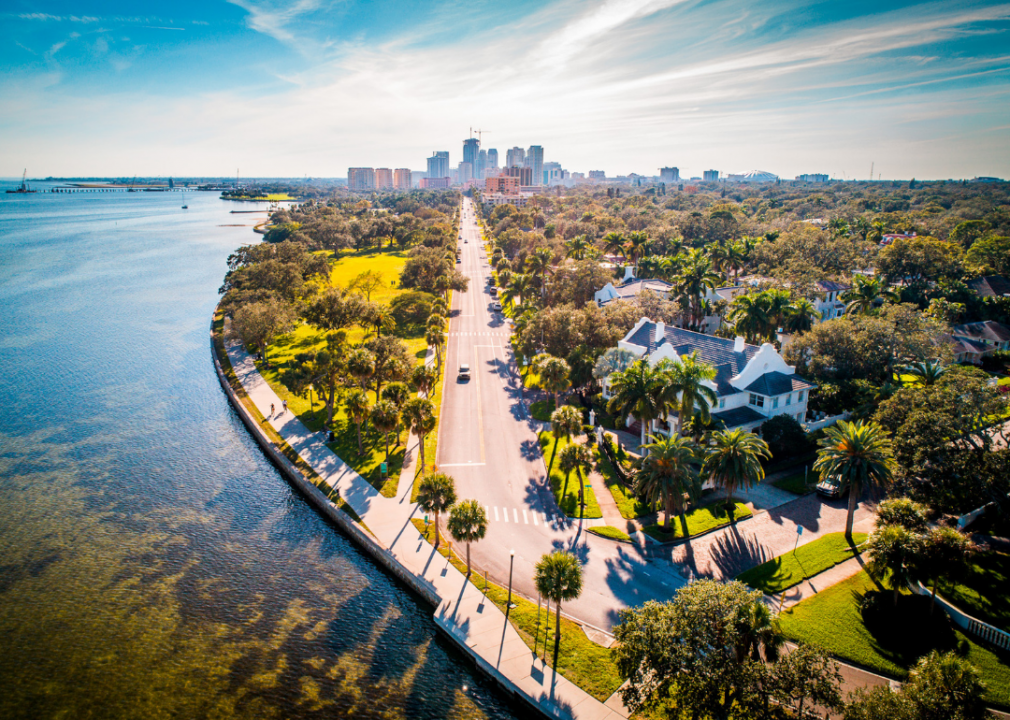
Noah Densmore // Shutterstock
#6. Tampa/St. Petersburg, Florida
– Total households in 2021: 1,296,500 (five-year projected annual change: 1.2%)
– 2020 median home price: $240,000 (9.3% more than 2019)
– Housing Opportunity Index: 63.6 out of 100
– Walk score: 65 out of 100
– Rent as percent of household income: 23.1%
– 2021 total employment: 1,380,000 (five-year projected annual change: 2.9%)
– Real GDP per capita: $45,987 (five-year projected annual change: 1.1%)
The housing market in Tampa/St. Petersburg, Florida, is another market with the best real estate prospects for investors, and there are a number of reasons this market is worth watching. For starters, the area of Tampa and St. Petersburg offers top-rated beaches, beautiful scenery, and about 361 days of sunshine each year on average, earning it the nickname “The Sunshine City” and making it a great spot to land for beach-lovers and nature enthusiasts alike. Plus, while the housing prices have gone up recently—as they have in nearly all markets across the nation—the cost of housing in Tampa and St. Petersburg is still much lower than it is in most of the rest of the nation. Tampa is also home to 10 of Florida’s top-rated high schools, making it a great option for parents looking for quality education for their children. There are several options in the area for education, including top-rated charter schools. While Tampa/St. Petersburg is not as walkable as places like Boston or Long Island, there has been a focus on increasing the walkability in the area with the addition of new retail projects and other developments.
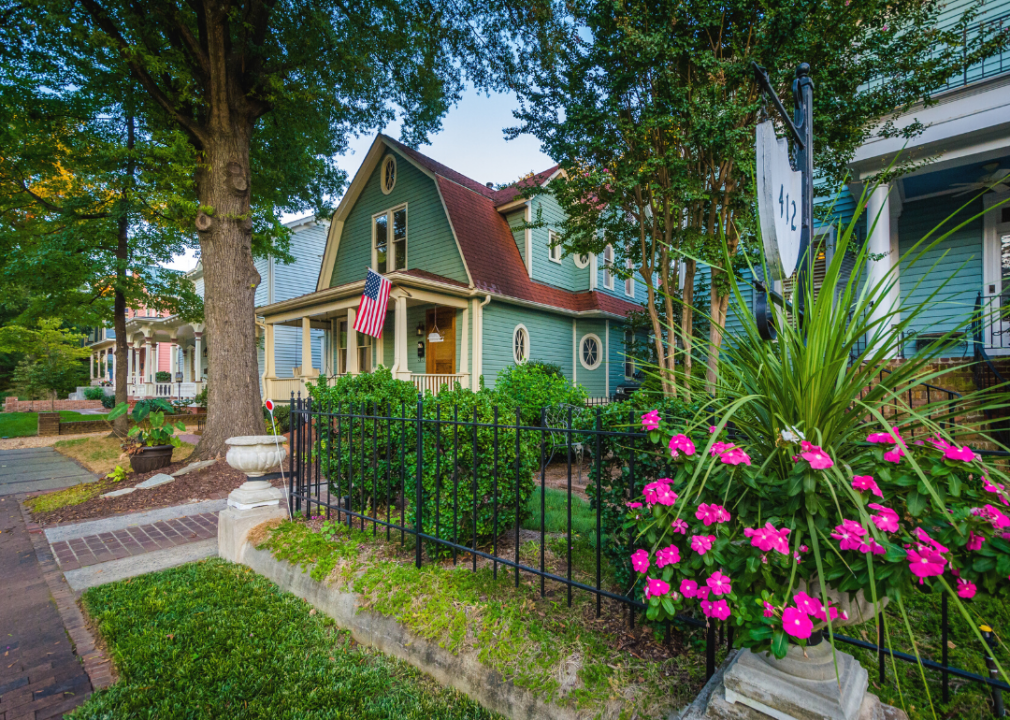
Jon Bilous // Shutterstock
#5. Charlotte, North Carolina
– Total households in 2021: 1,016,200 (five-year projected annual change: 1.5%)
– 2020 median home price: $280,000 (10.7% more than 2019)
– Housing Opportunity Index: 70.4 out of 100
– Walk score: 26 out of 100
– Rent as percent of household income: 13.5%
– 2021 total employment: 1,225,000 (five-year projected annual change: 3.6%)
– Real GDP per capita: $53,438 (five-year projected annual change: 1.5%)
Buyers have been flocking to the Charlotte, North Carolina, area for the last few years, and while that red-hot housing market is one draw, there are a few other reasons investors should take note of this city. This city’s good weather, the low median home prices, and the abundance of job opportunities—especially in the tech industry—have caused an influx of new buyers looking for housing in the area. There are also a few up-and-coming historic neighborhoods in Charlotte that are still affordable, many of which are just primed for investment opportunities. Take, for example, North Division—or NoDa—an area that was once filled with abandoned buildings from the manufacturing mill heyday, but is now one of the most artistic and culturally diverse neighborhoods in the city. In addition, Charlotte has one of the highest concentrations of top-ranked public schools in the state and it’s easy to see why this city has a ton of draw for new residents and investors alike.
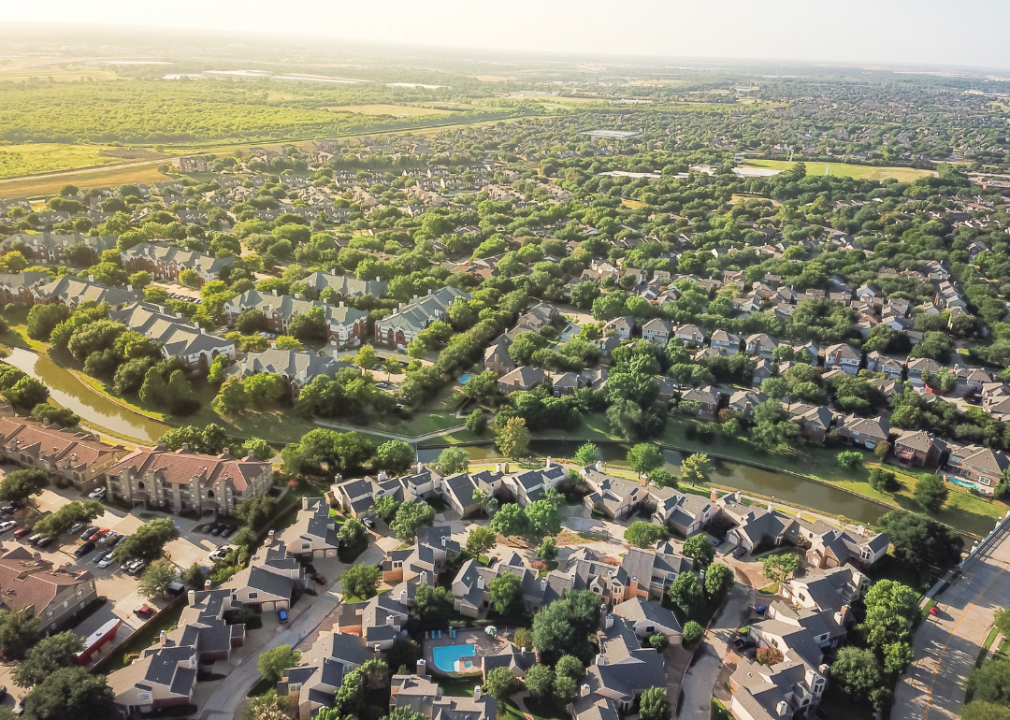
Trong Nguyen // Shutterstock
#4. Dallas/Fort Worth, Texas
– Total households in 2021: 2,807,600 (five-year projected annual change: 1.6%)
– 2020 median home price: $322,000 (3.7% more than 2019)
– Housing Opportunity Index: 49.9 out of 100
– Walk score: 46 out of 100
– Rent as percent of household income: 17.7%
– 2021 total employment: 3,790,000 (five-year projected annual change: 2.5%)
– Real GDP per capita: $52,934 (five-year projected annual change: 1.3%)
The Dallas-Fort Worth metro area in north Texas has long been a draw for savvy investors, and it remains one of the best real estate prospects that investors should watch for. One of the biggest draws is that this sprawling metro area offers neighborhoods for every type of resident and entertainment options to suit every style—including a thriving restaurant scene that has grown to rival what can be found in many other foodie cities. The job market in Dallas is also booming, which draws in tons of new, young residents to the big city, while many families flock to the more suburban atmosphere offered in Fort Worth. The median price of housing in the Dallas-Fort Worth metro area is lower than the national average, but there are neighborhoods with price points for every buyer, from the high-dollar Highland Park and Preston Hollow neighborhoods to the more affordable up-and-coming areas like Frazier and The Bottom, which have been the focus of revitalization efforts in recent years. There are hidden pockets of affordable neighborhoods just like these all over the Dallas-Fort Worth area, and with the ongoing growth in jobs, residents, and home prices, there are plenty of opportunities to cash in on the real estate prospects the Dallas-Fort Worth area offers.

Sean Pavone // Shutterstock
#3. Nashville, Tennessee
– Total households in 2021: 769,100 (five-year projected annual change: 1.4%)
– 2020 median home price: $360,000 (6.7% more than 2019)
– Housing Opportunity Index: 51.4 out of 100
– Walk score: 28 out of 100
– Rent as percent of household income: 19.3%
– 2021 total employment: 1,044,000 (five-year projected annual change: 2.8%)
– Real GDP per capita: $58,512 (five-year projected annual change: 1.3%)
Nashville, Tennessee, isn’t just the country music capital of the world—it’s also a city with some of the best real estate prospects for investors. Nashville has been transformed as a city over the last decade thanks to numerous revitalization efforts, with housing prices skyrocketing in recent years, but there are still plenty of neighborhoods—in the downtown area, in particular—that are ripe for the investment pickings. The growing job market in Nashville, which recently gained two major companies, Oracle and Amazon, as well as the city’s low unemployment rate, have also helped to make Nashville one of the top markets for rent growth—and, in turn, one of the best places for real estate investing. The thriving tourism industry and live music scene have also made this city a draw for residents of all types. Those factors, coupled with the draw of excellent school districts in Nashville’s suburbs, have helped to make real estate a hot commodity—one with some awesome real estate prospects for investors.
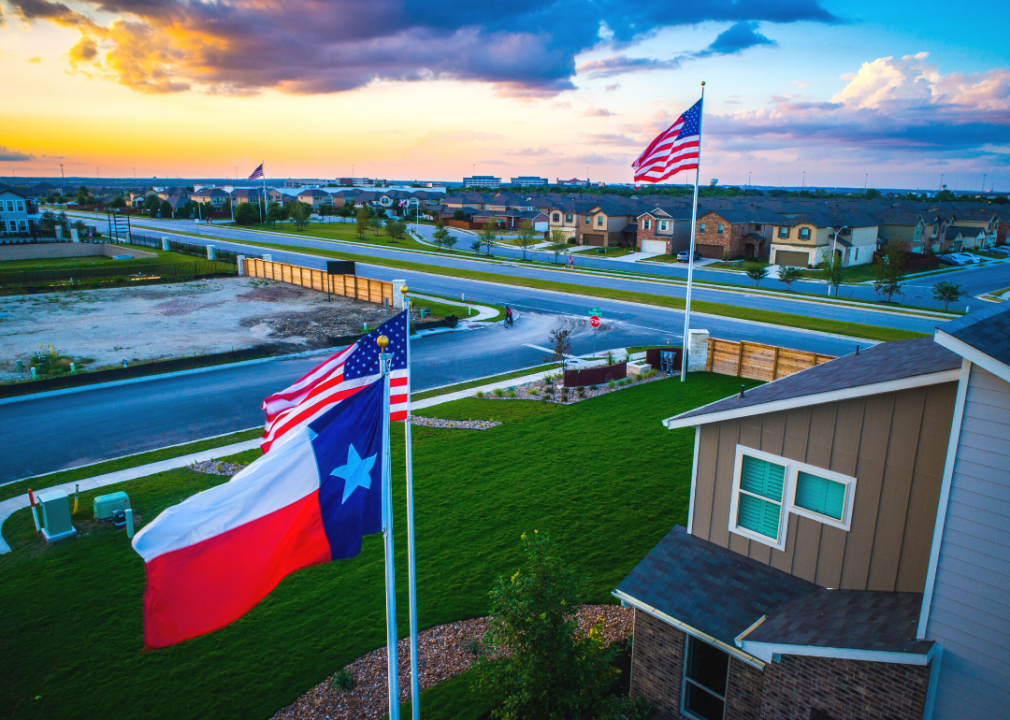
Roschetzky Photography // Shutterstock
#2. Austin, Texas
– Total households in 2021: 819,300 (five-year projected annual change: 2.3%)
– 2020 median home price: $335,000 (3.7% more than 2019)
– Housing Opportunity Index: 59.3 out of 100
– Walk score: 40 out of 100
– Rent as percent of household income: 16.5%
– 2021 total employment: 1,128,000 (five-year projected annual change: 3.2%)
– Real GDP per capita: $55,589 (five-year projected annual change: 1.3%)
Austin, Texas, may not be the most walkable city on this list, but the other perks for residents living in this metro have made it a great place for real estate prospects for investors. The recent tech exodus from the Bay Area in California to Austin helped to add many new jobs to an already thriving job market in this city, and that’s not counting the transplants who have flocked to Austin in recent years for various reasons. And, there are plenty of reasons to move to Austin. Not only is Austin considered the music capital of the world—dubbed so because it has more music venues per person than anywhere else in the nation—but other factors, such as the thriving restaurant and bar scene, have been a hot draw for new residents in search of fun. Plenty of families are attracted to Austin as well, where they’ll find some of the best schools in the state of Texas—and in some cases, the nation. And, while the housing market has been tough (and expensive) for buyers in recent years, there are still some affordable up-and-coming neighborhoods to help balance out the cost of buying a home in this city.
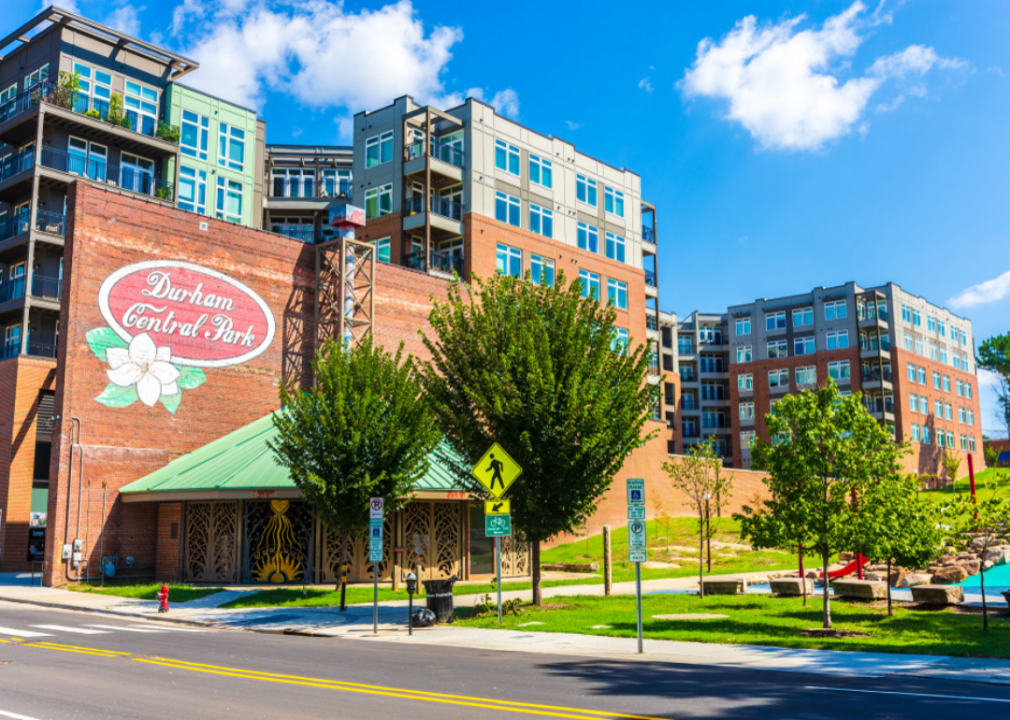
Leon Justice // Shutterstock
#1. Raleigh-Durham, North Carolina
– Total households in 2021: 1,049,900 (five-year projected annual change: 1.5%)
– 2020 median home price: $328,000 (7.3% more than 2019)
– Housing Opportunity Index: 68.7 out of 100
– Walk score: 53 out of 100
– Rent as percent of household income: 15.1%
– 2021 total employment: 1,231,000 (five-year projected annual change: 3.7%)
– Real GDP per capita: $53,427 (five-year projected annual change: 1.4%)
The economy in Raleigh-Durham, North Carolina, which was hit hard by the loss of numerous industries like tobacco, manufacturing, and textiles in the 1990s, is back with a vengeance—and so is the housing market, making it the top place in the nation for real estate prospects for investors. The Raleigh-Durham area has been the focus of revitalization efforts over the last decade, and it has led to a thriving job economy filled with numerous industries and big-name companies—like IBM, Cisco, GlaxoSmithKline, and Fidelity Investments—which has kept new residents flowing into the area on a regular basis. The low median home price in the Raleigh-Durham area is also a draw for residents. Prices have skyrocketed recently, but there are plenty of up-and-coming affordable areas, like South Park, a well-established neighborhood south of downtown Raleigh that is filled with a mix of new construction and homes built in the 1930s that can be purchased for well below the median home price in the city. Other unique factors, including dozens of nationally recognized schools in the area, have helped to make this North Carolina metro a great place for residents and real estate investors alike.
This story originally appeared on ZeroDown
and was produced and distributed in partnership with Stacker Studio.



